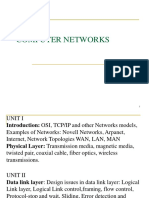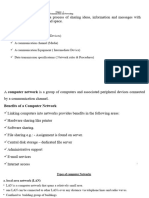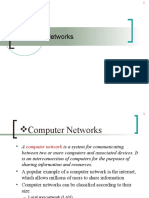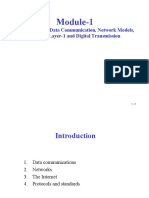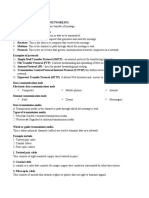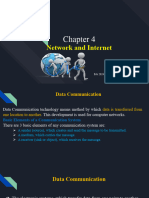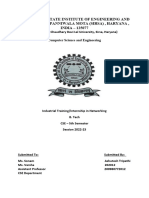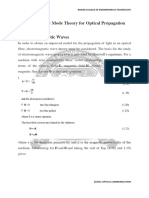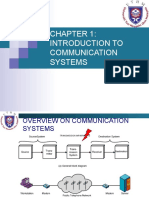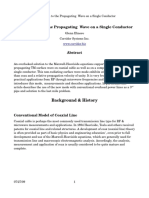0% found this document useful (0 votes)
105 views33 pagesIntro to Computer Networks
Computer networks allow interconnected computers to communicate and share resources. A computer network consists of senders, a transmission medium, and receivers. Data can be transmitted simplyx, half-duplex, or full-duplex. Common network topologies include bus, star, ring, and mesh. The Internet is the largest computer network connecting millions of devices globally using TCP/IP protocols. It allows services like email, web browsing, file transfers and more.
Uploaded by
Sadi Mohammad HridoyCopyright
© © All Rights Reserved
We take content rights seriously. If you suspect this is your content, claim it here.
Available Formats
Download as PPTX, PDF, TXT or read online on Scribd
0% found this document useful (0 votes)
105 views33 pagesIntro to Computer Networks
Computer networks allow interconnected computers to communicate and share resources. A computer network consists of senders, a transmission medium, and receivers. Data can be transmitted simplyx, half-duplex, or full-duplex. Common network topologies include bus, star, ring, and mesh. The Internet is the largest computer network connecting millions of devices globally using TCP/IP protocols. It allows services like email, web browsing, file transfers and more.
Uploaded by
Sadi Mohammad HridoyCopyright
© © All Rights Reserved
We take content rights seriously. If you suspect this is your content, claim it here.
Available Formats
Download as PPTX, PDF, TXT or read online on Scribd
/ 33






